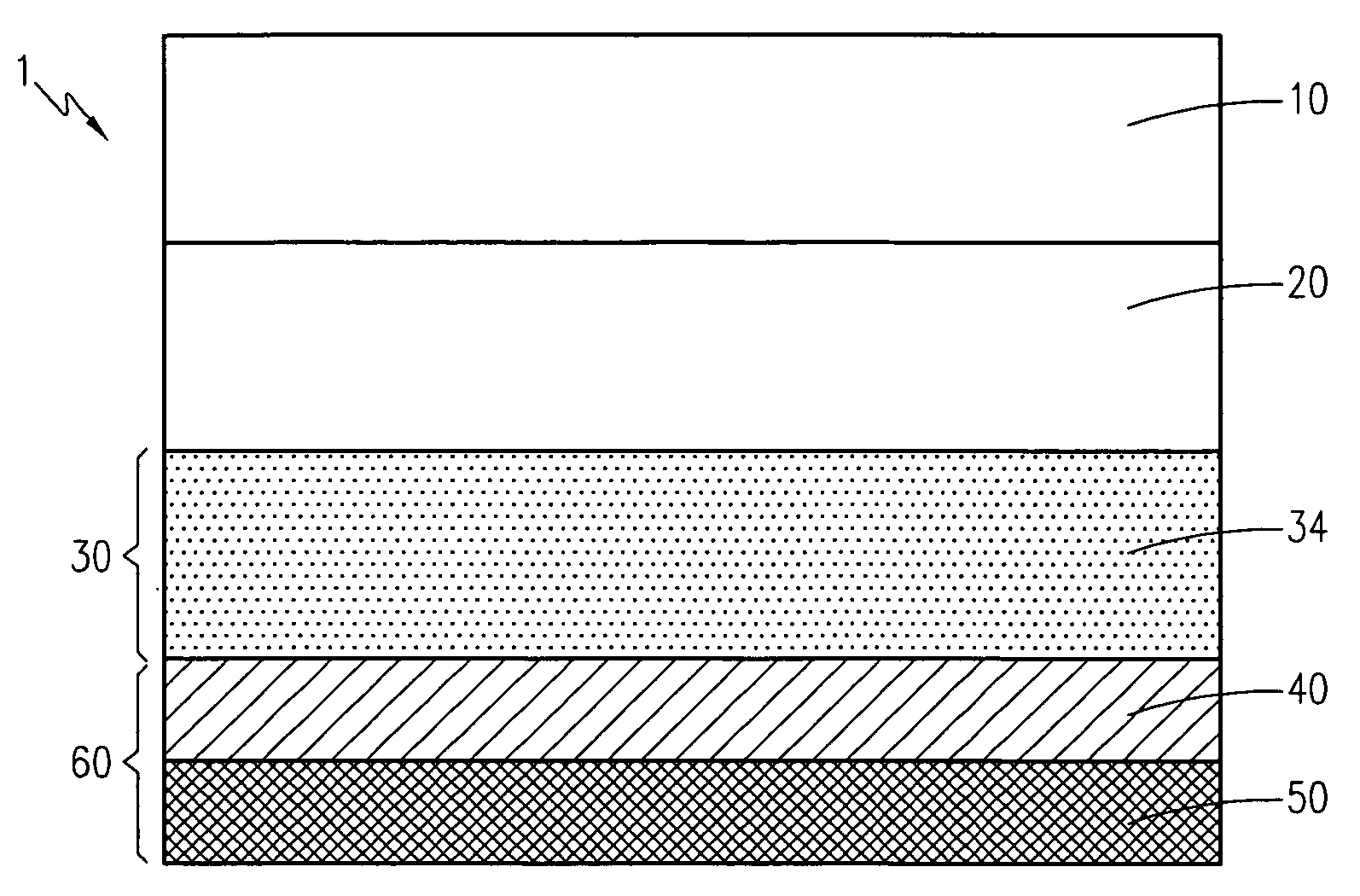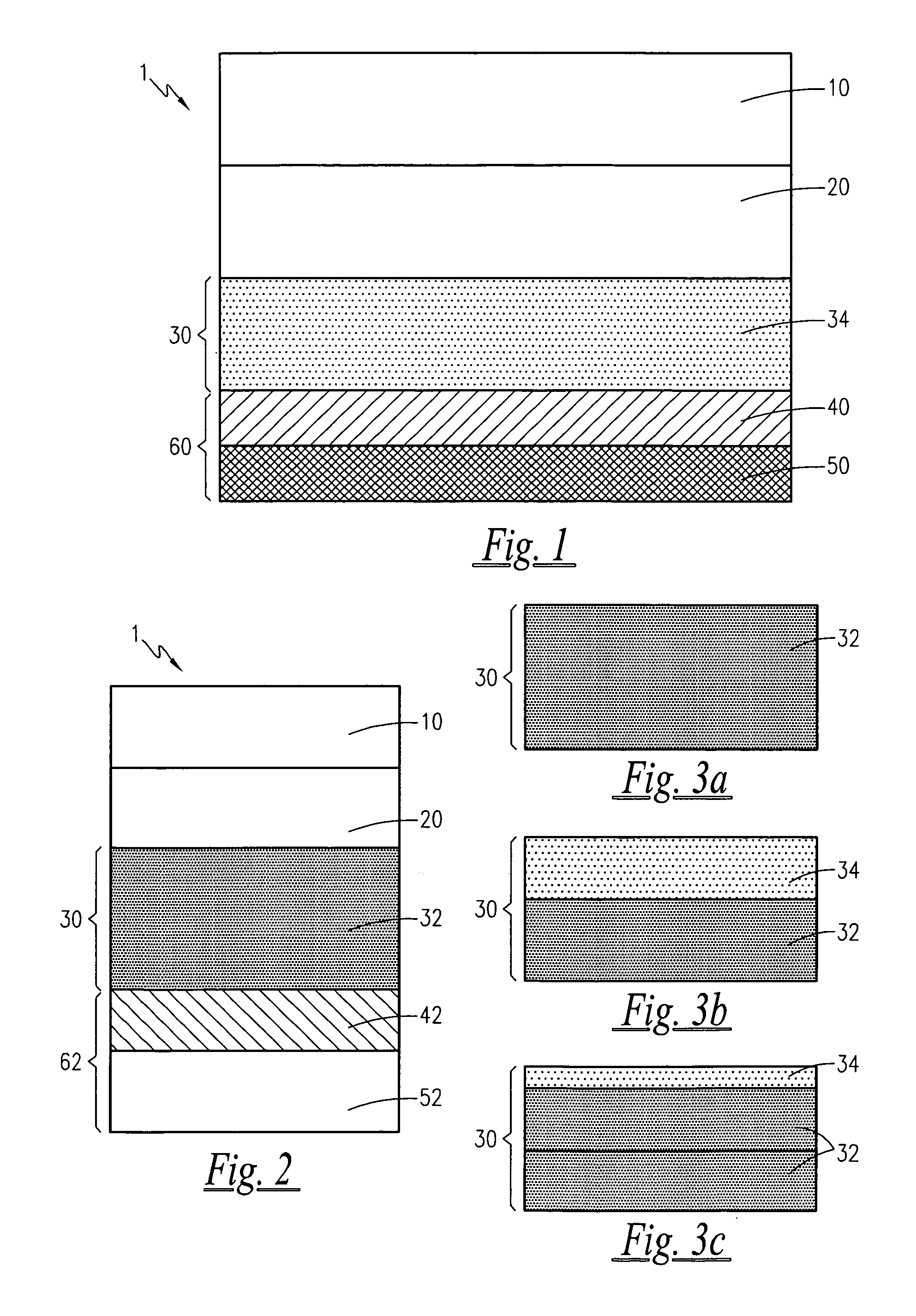Back contact and back reflector for thin film silicon solar cells
a back contact and solar cell technology, applied in the field of silicon solar cells, can solve the problems of reducing the performance of pv modules, reducing the reflectivity properties of metallic films, and affecting the performance of back contacts based on silver or aluminum
- Summary
- Abstract
- Description
- Claims
- Application Information
AI Technical Summary
Problems solved by technology
Method used
Image
Examples
Embodiment Construction
[0017] It should be noted that in the following description the term “reflective” or “reflector” is used in describing the white reflective media layer even though the white media according to the present invention does not necessarily act as a perfect specular reflector as does the metal reflective layer. However, the white reflective media re-scatters the light in many spatial directions from one incident beam. Thus it is better described as diffusive reflector.
[0018] Referring now to the drawings, FIG. 2 shows a thin film silicon solar cell 1 according to the present invention that may be used in a wafer based silicon PV module. The cell 1 includes a carrier substrate layer 10, a front contact layer 20, a silicon solar cell layer 30, and a back contact 62 comprising a TCO contact layer 42 and a back reflective layer 52.
[0019] The substrate layer 10 and the front contact layer 20 are similar to the layers 10 and 20 shown in FIG. 1. More specifically, the substrate layer 10 is a ...
PUM
 Login to View More
Login to View More Abstract
Description
Claims
Application Information
 Login to View More
Login to View More - R&D
- Intellectual Property
- Life Sciences
- Materials
- Tech Scout
- Unparalleled Data Quality
- Higher Quality Content
- 60% Fewer Hallucinations
Browse by: Latest US Patents, China's latest patents, Technical Efficacy Thesaurus, Application Domain, Technology Topic, Popular Technical Reports.
© 2025 PatSnap. All rights reserved.Legal|Privacy policy|Modern Slavery Act Transparency Statement|Sitemap|About US| Contact US: help@patsnap.com


